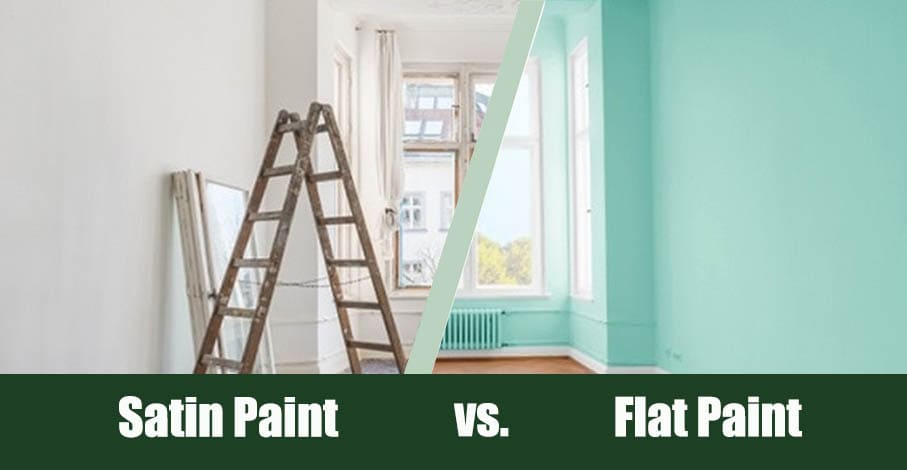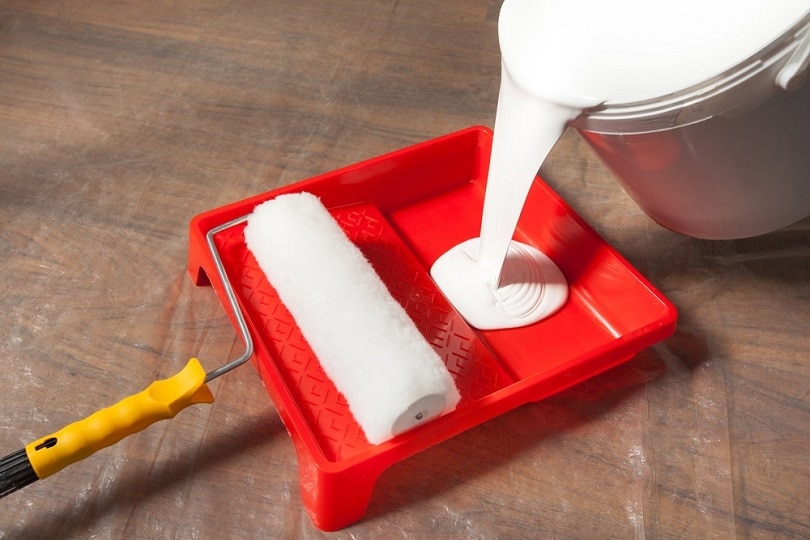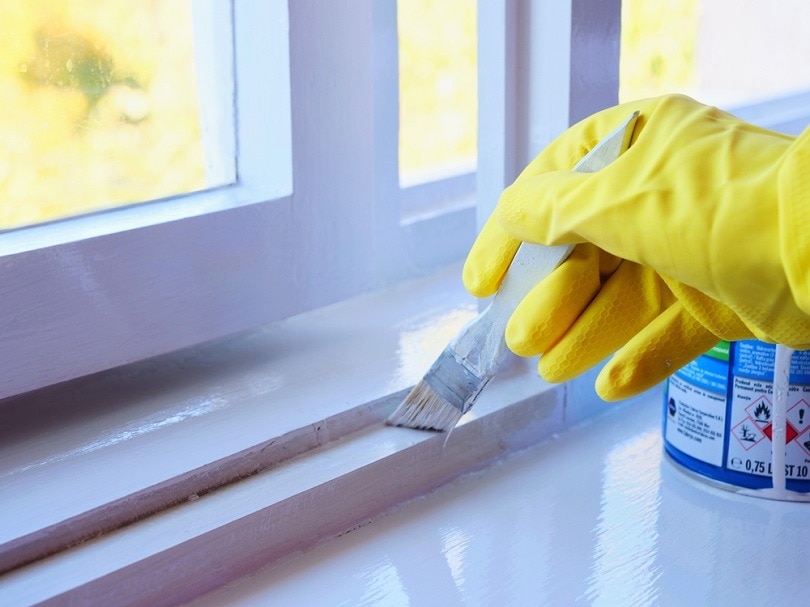Satin vs. Flat Paint: What’s The Difference?
-
- Last updated:


Are you looking forward to starting a paint project, but not sure which paint finish is better for your needs? This is a question a lot of people ask. The trouble is they don’t always find the answer. When it comes to painting, unless you are a professional, you might not always know what finish looks best on what substrate.
It can be difficult to determine whether a matte finish will be good for walls, or does a satin work better on a door? To answer these questions and a bunch more, we have taken the opportunity to shed some light on the situation.
Below, we will go over the essential differences, what the finishes look like, and where they are best used. We will also give you some tips that will have you looking like a pro next time a painting conversation pops up around the water cooler.
The Difference Between Satin and Flat Paint
Satin and flat are types of finishes that the final layer of paint will show. Satin is more glossy-looking paint, while the flat is a matte coat with no shine. When you choose a color from the paint store, the clerk or attendant will add the color pigment and a gloss medium. The amount of gloss-medium is going to determine the amount of shine your paint will reflect.
Which one you chose can depend on several things. First is the substrate. One thing to note is that the more gloss is in the paint the more the light will reflect showing any texture of imperfections more clearly. In that sense, if you are painting your living walls in an older home, there are bound to be indentations or marks in the drywall. In that case, flat paint would be better. In new construction, you can do satin as the drywall will be in good condition.

Another consideration is the location you are painting in. Gloss acts as a barrier between the paint and anything that comes in contact with it. High-traffic areas such as kitchens, bathrooms, and kid’s rooms do better in satin. Flat is preferable in an office or closets.
Lastly, you want to consider your level of skill with painting. The more shine there is to paint, the harder it is to work with. Latex is a fast-drying medium, and gloss needs to be applied with precision. Any mistakes can be very visible once the paint is dry. On a side note, latex and acrylic are the only two paints where you can choose the amount of gloss. You can not do so with oil, as it already comes with an added sheen.
The Ease of Use
In general, painting is not as easy as taking a paintbrush to the wall. First, anything on the substrate you are painting needs to be removed. You will need to wash done the area and scrape off any loose paint, and sand down the entire area. It is also recommended that you add a coat of primer, as well. This is especially true if you are going to be applying a dark color or a light pigment over a darker one. For latex paint, you want to go with a latex or oil primer for either flat or satin.

Once that work has been completed, you should cover any surfaces that could get paint on it. You can also consider taping off any areas you wish to avoid with painters tape. Unlesss you are a professional, it is a good idea to do this around trim and electrical outlets.
Both flat and satin paint can be applied using a paintbrush, roller, or sprayer. If they are not familiar with a sprayer, many people choose a roller for the flat paint and a paintbrush for the small detail work. Matte mediums are the easiest to apply as they do not require too much precision. You can simply roll the paint out along the boards and fill in the empty spaces.
Satin finishes are a little more difficult. As mentioned before, the gloss in the paint will catch the light making any imperfections noticeable. This is also true if the paint is applied haphazardly. When rolling it out, it is best to go straight up and down across the entire wall. If you were to start vertically, then switch to horizontal strokes, you would see the difference in the sheen when it dries.
Maintenance & Durability
Latex is the overall best paint for the exterior of the home. When it comes to flat versus satin, however, the durability has to go to satin. If you recall, the gloss medium inside the paint acts as a barrier between the paint and the outside world. This is why satin is better suited for high traffic areas. It is less likely to stain, and it is easier to clean.
Flat paint is not as easy to clean, and it attracts more dirt and grime. If you have flat paint in an area where you will have to wash it regularly, eventually the scrubbing will wear down on the paint. This will give an overall appearance of patchiness in the color.
Here’s a pro tip: Flat paint is easier to touch up that satin. For flat, all you have to do is sand the area and add the paint. Satin touch-ups create what is called flashing. When you apply the wet satin paint to dry paint, you will be able to see the spot clearly once it dries. The bigger the spot the worst it will particularly from a side view.

Other Considerations
Something else to consider is cost. Typically, paint that has gloss added to it will cost more than flat options. This can vary with brand, though. The price can also be different due to the circumstances. For example, if you are highering a professional to paint, the cost of labor will be higher if the area needs more prep for the satin. Sanding and patching walls can take time but is necessary for a smooth finish. All in all, satin is generally the more expensive route but can pay for itself as it does not need to be repainted as often.
Another consideration is color. White and lighter colors tend to look better in satin. That being said, dark colors work well in matte, however, this is personal preference. Also, many people choose to use flat paint on their walls and use satin on trim and doors to add elegance to space. At the end of the day, how you use the colors is entirely up to you.
- Easier to keep clean
- Stain-resistant
- More durable
- Recommended for high traffic areas
- Not suited for textured or damaged surfaces
- Harder to apply
- Flashing with touch-ups
- Hides stains
- Easy to work with
- Cheaper
- Better for dark colors
- Less durable
- Patchiness from cleaning
- Not recommended for high traffic areas

Conclusion
We hope this information will help you with your next flat or satin paint dilemma. Keep this in mind the next time you are going to paint, so you will get the best bang for your buck. Also, if you need some info on satin versus semi-gloss, check out our article here to get the details.
Related Reads:
- SATIN VS. SEMI-GLOSS PAINT: WHAT’S THE DIFFERENCE?
- EGGSHELL VS. SATIN PAINT: WHAT’S THE DIFFERENCE?
- MINERAL SPIRITS VS. PAINT THINNER: WHAT’S THE DIFFERENCE?
Featured image credit: hanohiki, Shutterstock
Contents

